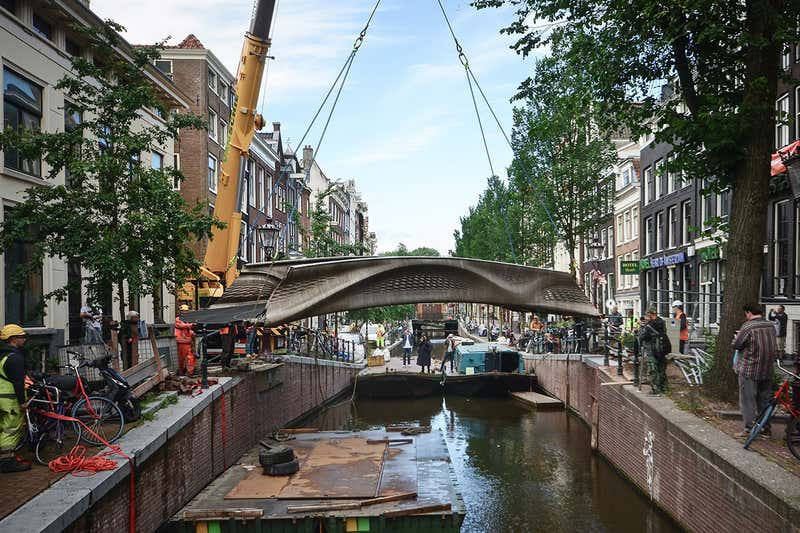The first ever 3D-printed steel bridge has opened in Amsterdam, the Netherlands. It was created by robotic arms using welding torches to deposit the structure of the bridge layer by layer, and is made of 4500 kilograms of stainless steel.
The 12-metre-long MX3D Bridge was built by four commercially available industrial robots and took six months to print. The structure was transported to its location over the Oudezijds Achterburgwal canal in central Amsterdam last week and is now open to pedestrians and cyclists.
More than a dozen sensors attached to the bridge after the printing was completed will monitor strain, movement, vibration and temperature across the structure as people pass over it and the weather changes. This data will be fed into a digital model of the bridge.
Mark Girolami at the University of Cambridge, who is working on the digital model with a team at the Alan Turing Institute in London, says that investigations into bridge failures often reveal deterioration that was missed. Constant data feedback may have been able to prevent these failures by providing an early warning, he says.
Girolami says that early indications for the strength of 3D-printed steel are positive. “One of the things that we found is that the strength characteristics are dependent on the orientation of the printing. But what was in some sense surprising was that the baseline strength was what you would expect of just rolled steel, and it actually increased in some directions.”

